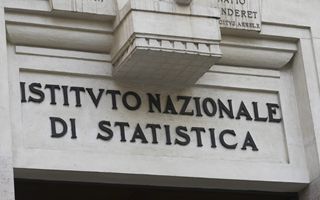(Finance) – In the fourth quarter 2023 the net debt of the Public Administrations in relation to GDP it was equal to -5.5% (-6.7% in same quarter of 2022).
This was revealed by Istat, underlining that the primary balance of public administrations (debt net of interest expense) was negative, with
an impact on GDP of -1.5% (-1.9% in the fourth quarter of 2022). The current balance of the PAs was positive, with an impact on GDP of 5.0% (+1.1% in the fourth quarter of 2022).
As for the tax burden it was equal to 50.3%, up 1.2 percentage points compared to the same period of the previous year. The gross disposable income and final consumption expenditure of consumer families decreased by 0.1% and 1.0% respectively compared to the previous quarter.
Household propensity to save consumers increased by 0.9 percentage points compared to the previous quarter, reaching 7.0%, while the Household purchasing power decreased by 0.5%.compared to the previous quarter, against a 0.4% increase in the implicit deflator of household consumption.
The profit share of non-financial companies is estimated at 44.4%, up 0.3 percentage points from the previous quarter. The investment rate of non-financial companies, equal to 20.2%, decreased by 0.5 percentage points
compared to the previous quarter.
In the fourth quarter of 2023, the public finance picture shows improving debt and growing fiscal pressure compared to the fourth quarter of the previous year. The purchasing power of families, although showing a contraction compared to the previous quarter, recorded the first positive trend change after seven quarters of decline. The propensity to save increases both compared to the previous quarter and compared to the same quarter of the previous year. There is a slight increase in the profit share of non-financial companies and a decline in their investment rate.
Obviously, what worries the associations is the data on purchasing power. “The Istat data on the accounts of Italian families demonstrate unequivocally how the high cost of living that characterized 2023 influenced the economic conditions of Italians, making them significantly worse”, says Codacons, commenting on the alarming numbers provided today by the statistics institute .
“The first given that what emerges is the strong reduction in the propensity to save, which reaches the minimum levels of the last 28 years, i.e. since the beginning of the Istat surveys – states the president Carlo Rienzi – In order to survive the high cost of living and make ends meet, Italians have therefore had to affect their savings, with the index collapsing to 7.8% from 6.3% in 2022. Confirmation also comes from the numbers on purchasing power: despite the disposable income of consumer families having increased by 4, 7%, the spending capacity of Italians was reduced by 0.5%. This is due to the sharp increase in retail prices that characterized 2023 and which impoverished families.”
“The numbers demonstrate not only the worsening of the economic conditions of familiesand, but also the inadequacy of the countermeasures implemented by the Government, which has not been able to adopt effective measures capable of protecting the pockets of Italians” – concludes Rienzi.
The National Consumers Union also speaks of “Alarming fact. THE consumption drops. If in the previous report, the one by institutional sector, also driven by inflation, consumption grew in 2023, now in the quarterly accounts, however, Istat attests to a clear worsening in the final part of the year, with consumption falling by 1% on the previous quarter. Even for the apparent positive figure compared to the same quarter of the previous year, +1.5%, it is actually a trend figure in free fall, constantly worsening: from +12.6% in the fourth quarter of 2022, to +11.7% in the first quarter of 2023, then decreasing to +8.1%, then +5.1% in the third quarter of 2023, up to +1.5% today. In short, things are getting worse and worse, instead of improving” says President Massimiliano Dona.
“Nothing good on the purchasing power front either of families which fell by 0.5% compared to the previous quarter. As for the fact that it rose by 2.1% on the fourth quarter of 2022, interrupting a negative series that had lasted for seven consecutive quarters, it is only an optical effect, due to the fact that in the fourth quarter of 2022 there was a trend collapse of 4 % and economic growth of 3.6%, with a drop of over 10 billion in just one quarter” concludes Dona.
